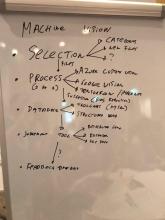We need a system for serving images with depicts suggestions needing confirmation.
Criteria:
Images fall out of the queue when they have one or more label candidates approved. If a user submits votes but only rejects or abstains on each candidate, approving none, the image remains in queue. N.B. This is v1 behavior and may change, so we should provide for this changing as best we can.
Open questions:
Should we favor completeness (showing all suggested tags (that meet the minimum cutoff)) or breadth (getting initial confirmations for as many images as possible)? The consensus view seems to be the latter.
Proposal
Present the suggestions on a Special page similar to https://commons.wikimedia.org/wiki/Special:UncategorizedFiles by implementing an ImageQueryPage subclass.
Ideally we would add some logic to prominently feature any images needing label confirmation that the logged-in user has uploaded.
